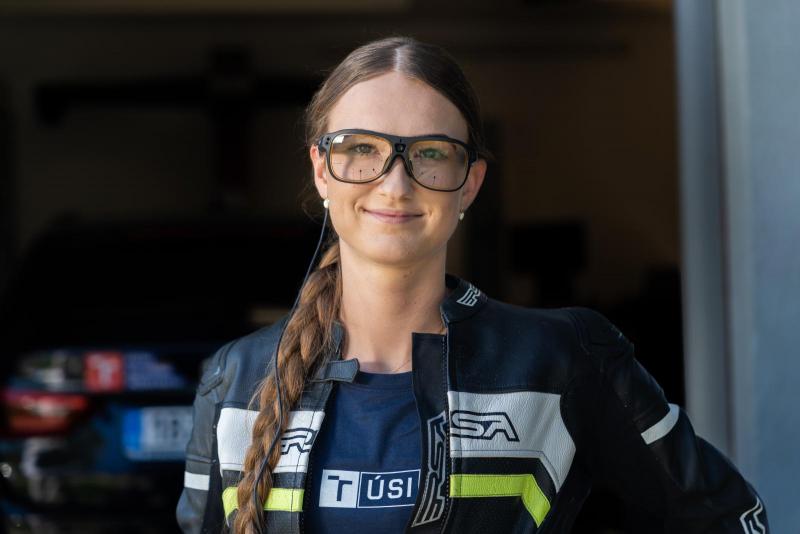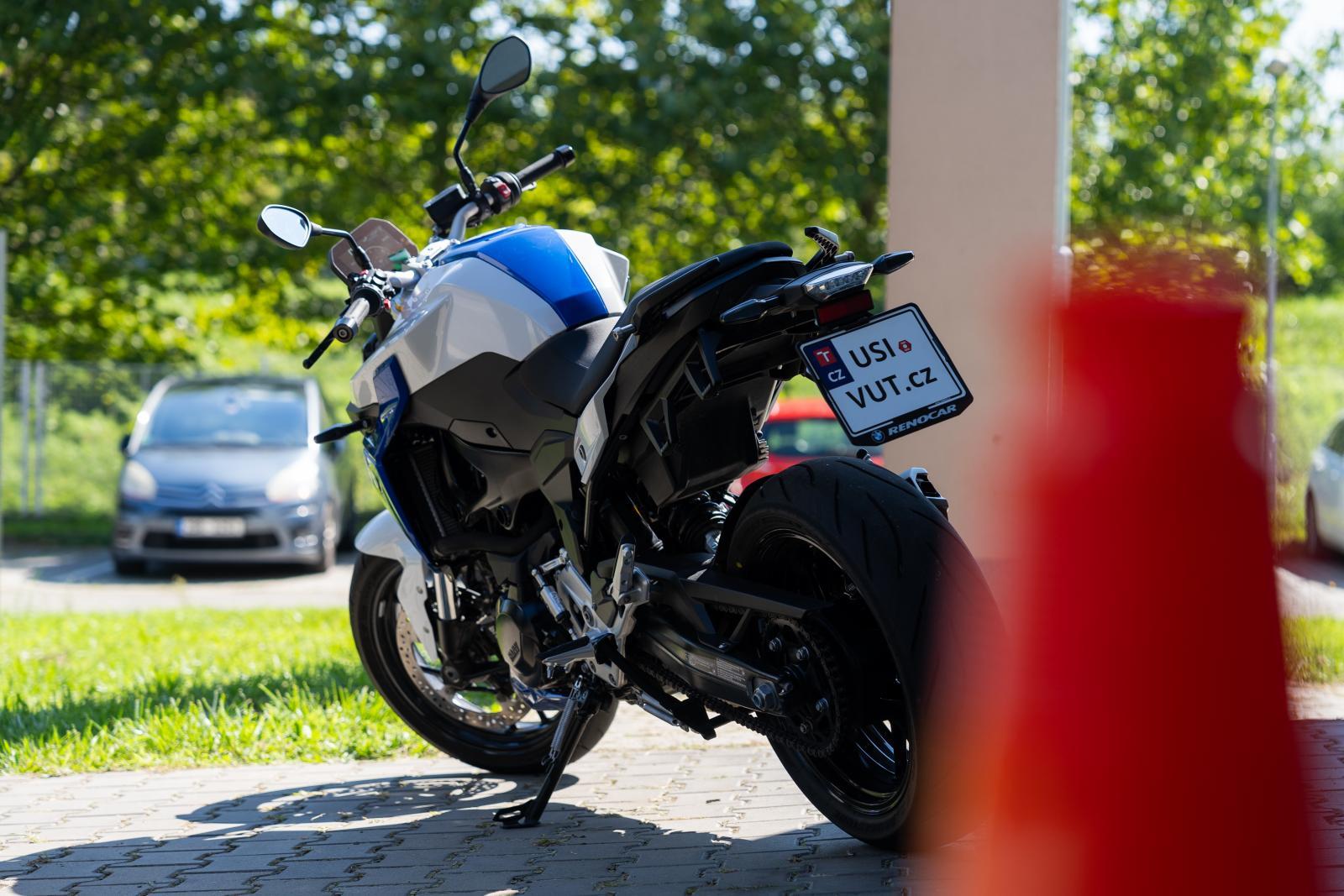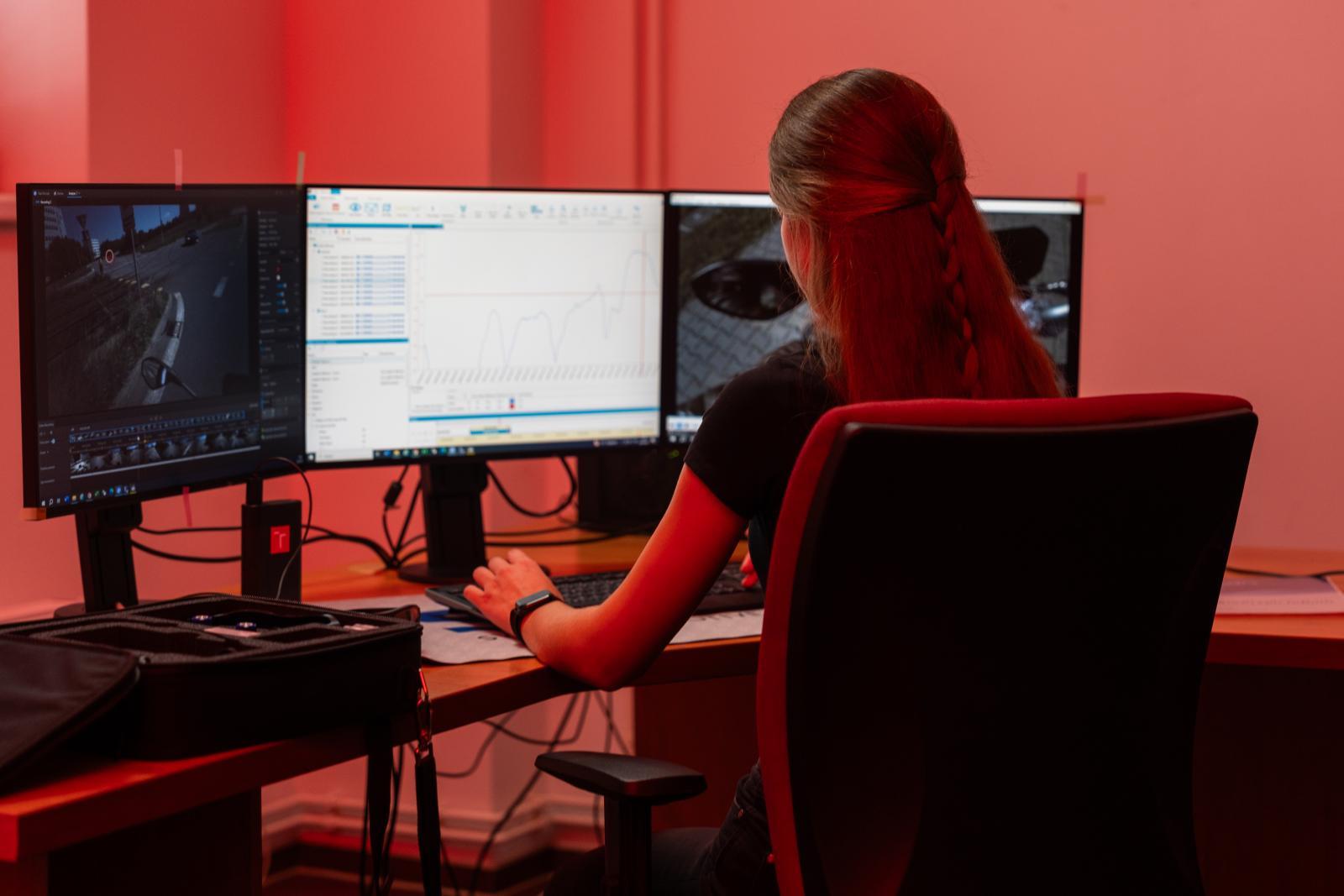People
Where does a motorcyclist look while riding? The answer will be offered by research from IFE

“Every motorcyclist's view can be the last – especially if it is too short or leads in the wrong direction,” explains motorcyclist and doctoral student Denisa Vaňková from the Institute of Forensic Engineering at the BUT (Brno University of Technology). Cars and motorbikes have been her lifelong hobbies. So this year, it has launched a research project to record where drivers are looking when they ride their motorcycles using eye-tracking glasses and cameras. The results should help improve traffic accident analytics.
In an international comparison of 19 European countries, Czech motorcyclists are not doing well – in the number of motorcyclists killed per million inhabitants in 2021, they even ranked 7th worst. More and more motorcyclists are hitting the roads in the Czech Republic every year – 48,000 newly registered motorcycles have been added in the last two years alone, and the total number of registered motorcycles in the Czech Republic is close to a million and a quarter.
A more precise analysis of motorcycle accidents is to be offered by a four-year research, which will be carried out by Denisa Vaňková, a graduate of the Institute of Forensic Engineering, as part of her doctoral thesis. She became interested in studying at the IFE for personal reasons, cars and motorbikes have been her lifelong hobby, and she has been riding motorbikes since she was 15 years old.
“The research will monitor the direction of the motorcyclist's gaze towards other road users, traffic signs and anything else the driver may perceive during the journey. And that includes distractions. Part of the research will also record the direction of gaze and safety when going around a bend,” explains the student. She also wants to focus on obstacle perception, fixing the eyes on the road or monitoring traffic in the rear-view mirrors.
Vaňková will collect data with the help of several riders – she wants to include beginners, experienced motorcyclists and professional circuit riders in the research. All will be equipped with eye-tracking glasses that sense the lens of the eye and its movements. A GoPro camera mounted on the rider's helmet and a 360-degree camera on his/her handlebars will record the terrain and traffic situations.
The data obtained from the glasses and the camera will then be compared by the student in Tobii Pro Lab. “In retrospect, we will be able to evaluate every millisecond and learn exactly where the driver looked and for what reason.”
She also wants to control eye contact between drivers. Failure to give way due to overtaking a motorcycle is one of the most frequent causes of traffic accidents.

“I know from my own experience that it is useful to make eye contact with the driver of the car that is about to give way to me at an intersection. This way I can verify that he/she knows about me and plans to keep the right of way,” the student said, noting that such research on motorcycle drivers – as compared to car drivers – has still not been done in detail.
(mar)
Historical legacy affects the value of cultural monuments. For example, the distance from the stop has an influence
How does the age of tyres affect road safety? The answer will be offered by research from the IFE
Women from BUT who move the world of science and technology
A hundred-year-old water system and a missing sewer system. Nevertheless, Kamenka is one of the most expensive districts in Brno
Unique Damage Catalogue maps dozens of traffic accidents. It will help forensic experts and insurance companies.